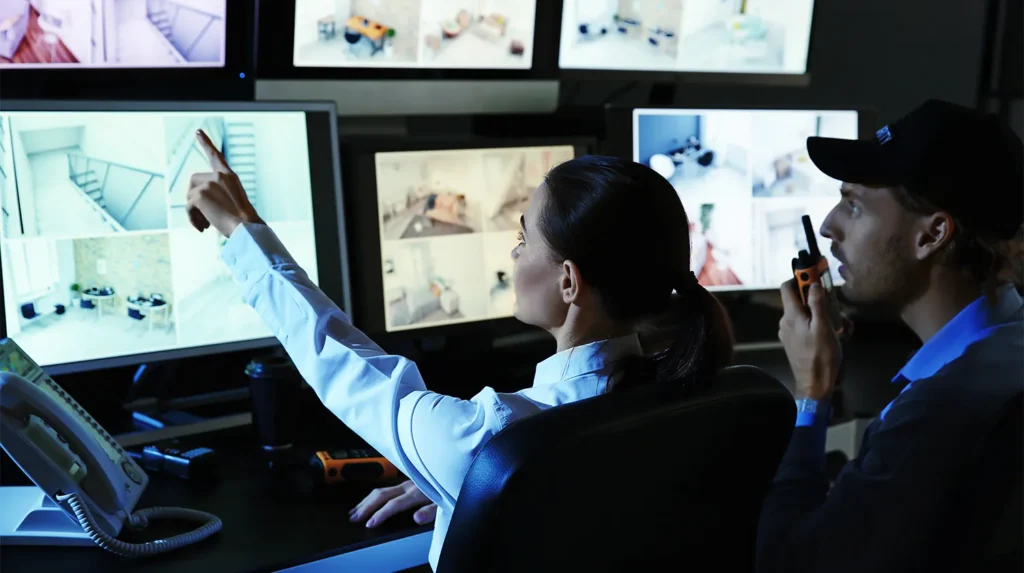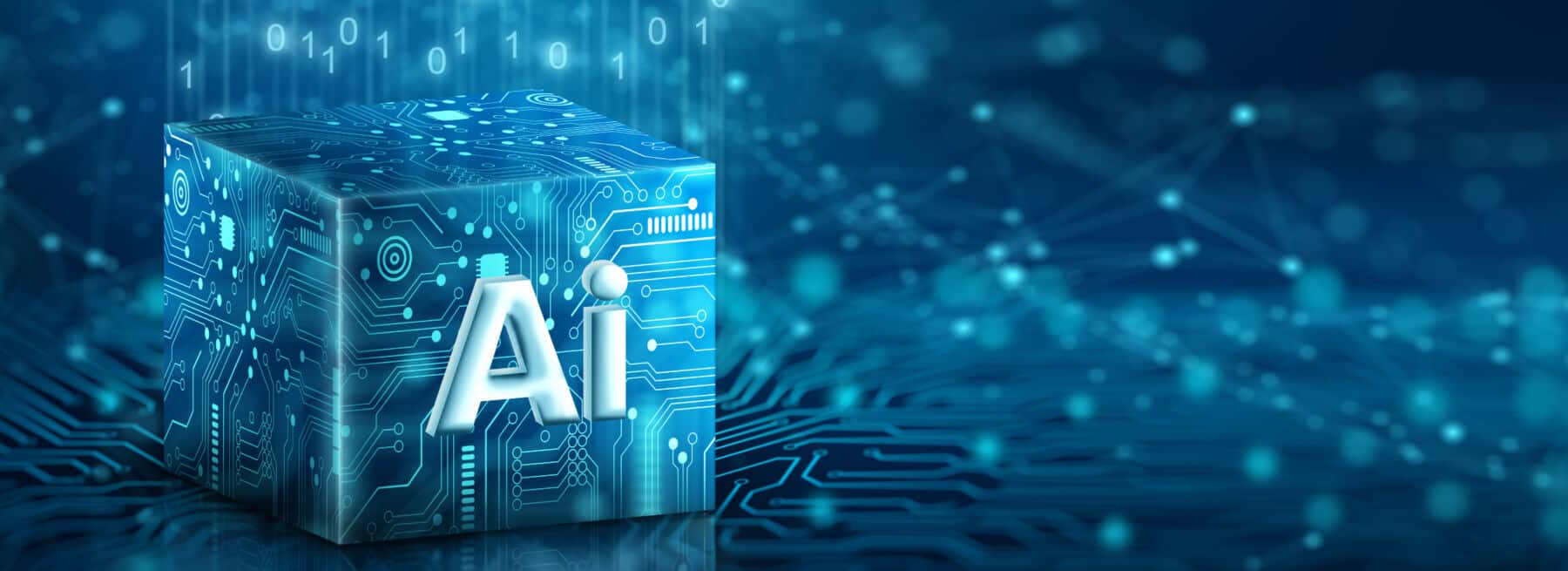Artificial Intelligence (AI) is changing the world of security by making video surveillance systems better, particularly through artificial intelligence surveillance. AI can detect threats with precision and speed by analyzing and monitoring video data. This article will look at how AI helps strengthen security, reduce human error, and practical applications in real-world scenarios for a more secure and efficient environment. Read on to see what AI brings to modern video surveillance.
Key Takeaways
- AI automates monitoring, improves threat detection, and reduces human error.
- AI video analytics can reduce false alarms, provide real-time alerts, enhance surveillance capabilities, and enable proactive incident response.
- When AI is incorporated into existing video surveillance systems, it can be a cost-effective solution. It can help increase operational efficiency and get more value out of existing security investments.
What is Artificial Intelligence in Video Surveillance?

Artificial intelligence is changing video surveillance by allowing security cameras to continuously and precisely analyze and interpret video data. This is a much better method than having security personnel monitor video feeds, which can often lead to missed threats due to human error or fatigue. Artificial intelligence systems can review footage 24/7 and spot risks that may be missed. Overall security operations can get a boost with computer vision.
Adding AI to video surveillance systems is a game changer. Former methods relied on personnel engagement, which can be resource-intensive and error-prone. AI-powered surveillance solutions automate many tasks. Security becomes more effective, reliable, and cost-efficient. It replaces and enhances human input with AI’s speed and precision saving time and money.
One of the best aspects of using AI in video surveillance is the ability to search through videos more quickly. Looking for specific activities or objects within large amounts of footage is like looking for a needle in a haystack. However, by quickly scanning through mountains of data, video analysts can find relevant incidents or objects for faster and more accurate investigations.
Technological advancements are essential for driving innovation and efficiency in video surveillance systems. Evolution and adaptation prove that it’s not just a tool but a must-have in security strategies to help protect properties and privacy.
AI-Powered Video Analytics
Video surveillance has been enhanced by AI-powered video analytics which is a major leap in monitoring technology. Using machine learning algorithms these systems can recognize and track activities, objects, or people in real-time as things happen. It provides more vigilance than humans working alone. With security cameras and AI video analytics on duty 24/7, there are always eyes on unusual behavior or potential threats.
AI surveillance systems can effectively reduce false alarms – a common problem with traditional surveillance where benign movements like shadows or animals can trigger unnecessary alerts. By distinguishing between real threats and insignificant movements, AI-powered systems can help security personnel better assess situations and improve response times.
The ability to generate instant alerts from AI-driven surveillance can improve loss prevention and safety. For example, in a retail setting, it can identify abnormal activity patterns like potential theft or aggression before things get out of hand. Security personnel and local authorities can be alerted to de-escalate the situation as soon as possible to maintain high levels of safety.
Adding predictive analytics into the mix makes this even more powerful when managing crowds, especially in high-density public areas. Analyzing behavioral trends and quickly identifying suspicious behavior in groups provides strategic crowd control benefits while proactively improving public safety. It’s not just about security but also user experience.
Facial Recognition and Access Control
Facial recognition is a key component of modern AI-powered surveillance systems, especially in access control. AI cameras can recognize and verify faces in real time for secure, touchless entry into restricted areas. This goes a long way in enhancing user convenience. Touchless entry is especially important in a post-pandemic world where minimizing physical contact is key.
Facial recognition with access control is seamless. AI-powered facial recognition software can work with third-party security solutions for a complete and robust security framework. Comparing a person’s face to their ID in real time, these systems can determine access rights, streamline entry, and reduce physical checks.
AI-powered facial recognition technology can also improve security operations by monitoring and tracking people within a facility. This is useful for identifying and managing people on watchlists. Potential threats can be detected and addressed quickly. Adding facial recognition to surveillance systems can give you better security and operational efficiency.
Predictive Analytics for Proactive Security

Predictive analytics powered by artificial intelligence is a forward-thinking approach to security. AI-powered algorithms can forecast using historical data to design proactive security strategies that anticipate threats. This predictive capability means you can allocate resources more strategically.
AI-driven surveillance systems use machine learning to analyze patterns and anomalies in massive amounts of data, recognizing deviations from normal behavior that could be a threat. For example, if a person is loitering in a restricted area or behaving strangely, AI can flag this activity and alert security in real time to respond quickly before things escalate.
This proactive approach not only helps improve security operations but also overall safety. Recognizing patterns of suspicious activity and alerting in real-time, AI cameras allow security teams to adjust their strategy and deploy resources to minimize risk, loss, and damage.
Smart Object Detection
Smart object detection is another AI innovation in video surveillance. AI security cameras can detect different objects to make monitoring more accurate and minimize false alarms. This is especially important in environments where you need to distinguish between harmless and dangerous objects.
Artificial intelligence can detect unattended objects and specific threats. For example, AI can send an alert if a weapon is detected and alert security. Real-time detection is key to deterring incidents and improving overall security.
In addition to threat detection, smart object detection gives security teams detailed information about the objects and people in the camera’s view. This situational awareness helps with decision-making and ensures security personnel are informed and prepared to respond to any situation.
Real-Time Alerts and Incident Response
The inclusion of AI in surveillance systems has improved incident management and real-time alerts. AI-powered cameras can issue targeted notifications about suspicious or unusual behavior, so security staff are alerted to potential threats. This is key to staying alert and responding quickly to any security breach.
AI-driven systems can speed up resolution during incidents by running pre-programmed workflows when threats are detected. This helps quicken reaction times and ensure appropriate actions are taken. These intelligent technologies provide instant access to video footage to help evaluate and mitigate issues more quickly.
As previously mentioned, AI can reduce false alarms—a big bonus—by distinguishing between real threats and benign movements that could be misinterpreted as threats and cause unnecessary interruptions to operations.
Enhancing Business Insights Through Video Data

The inclusion of AI in surveillance systems has improved incident management and real-time alerts. AI-powered cameras can issue targeted notifications about suspicious or unusual behavior, so security staff can be alerted to potential threats. This is key to staying alert and responding quickly to any security breach.
AI-driven systems can speed up resolution during incidents by running pre-programmed workflows when threats are detected. This helps quicken reaction times and ensure appropriate actions are taken. These intelligent technologies provide instant access to video footage to help evaluate and mitigate issues more quickly.
As previously mentioned, AI can reduce false alarms—a big bonus—by distinguishing between real threats and benign movements that are misinterpreted as threats and cause unnecessary interruptions that plague operations.
Integration with Existing Surveillance Systems

Integrating artificial intelligence with existing surveillance systems is practical and cost-effective. AI systems can be combined with current security infrastructure with minimal disruption and leverage existing security technology investments. So, businesses can add security without needing to replace their entire surveillance system.
Using AI in surveillance not only helps enhance security but can also use existing infrastructure to create a more efficient and cost-effective security solution. By integrating AI with existing cameras and systems, businesses can get more security and operational efficiency without the big costs.
AI-Powered Video Surveillance: The Future of Security

AI in video surveillance is changing the security industry. It can deliver more efficiency, precision, and threat detection. AI video analytics is improving monitoring and facial recognition and is simplifying access control—big steps in security evolution.
Powered by predictive analytics and intelligent object detection, AI surveillance systems can address security concerns while reducing false alarms. They enable fast and efficient action by sending real-time alerts to security teams who can act on potential threats to increase safety and efficiency.
By integrating with existing surveillance technologies businesses can save money and improve operations. As we look ahead, the growth and integration of AI in video surveillance will bring even more benefits to security and business intelligence.
To learn more about live video monitoring, AI, and machine learning, contact us.
Frequently Asked Questions
How does AI improve traditional video surveillance systems?
Consequently, this results in heightened security measures and greater effectiveness in overseeing spaces through surveillance.
What are the benefits of AI-powered video analytics in security operations?
How does facial recognition technology enhance access control?
This continuous monitoring of individuals within a facility further ensures robust security measures are in place.
What role does predictive analytics play in proactive security?
By embracing this method, an organization’s defensive strategies are significantly bolstered as it allows for swift action and diminishes risk through early detection and mitigation efforts.

